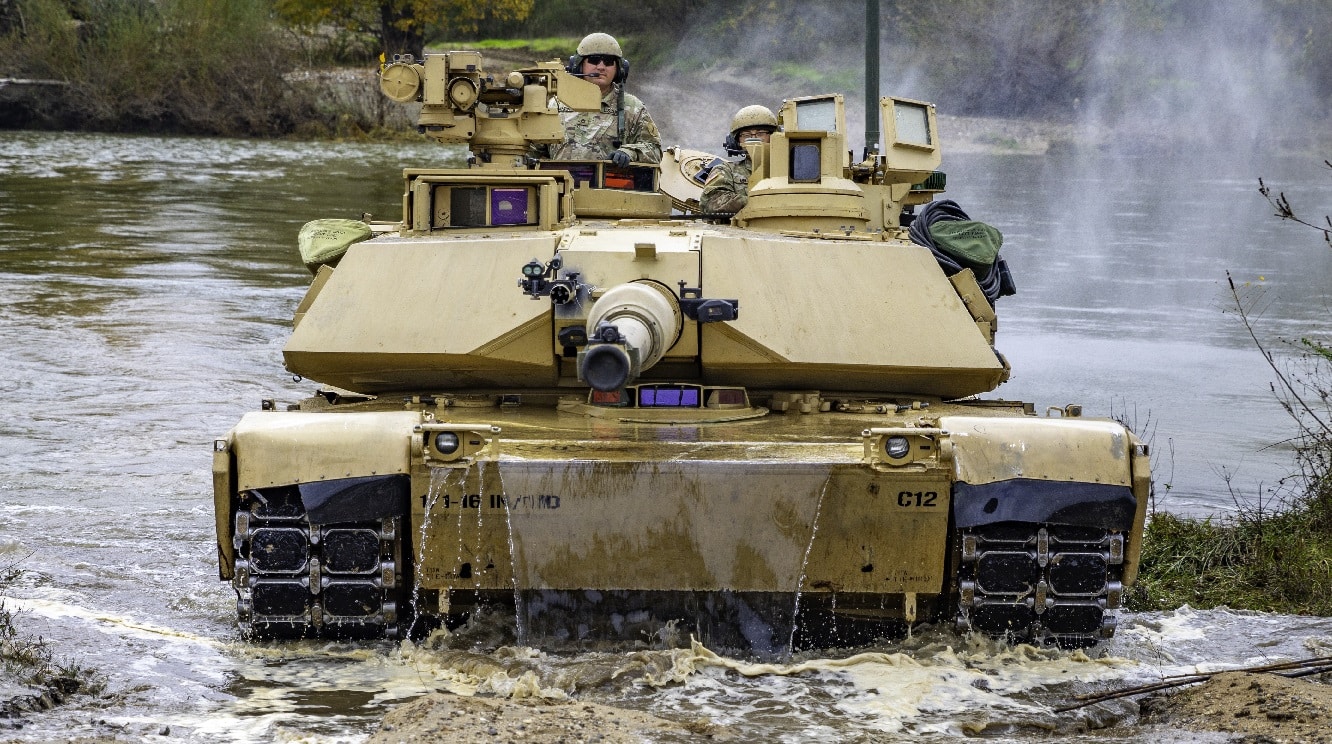Ukraine will soon have a number of U.S.-made M1 Abrams main battle tanks (MBT), United States Secretary of Defense Lloyd Austin said at the opening of the Ukraine Defense Contract Group meeting in Germany on Tuesday. The MBTs were pledged to Kyiv at the beginning of this year, as a part of a wider $43 billion security assistance package from Washington.
“I’m pleased to announce that the M1 Abrams tanks that the United States had previously committed to will be entering Ukraine soon,” Austin said during the contract group meeting of about 50 nations. The meeting was meant to focus on short-term needs for Kyiv, but also to help Ukraine “build a credible, a capable combat force for the long term.”
The tanks will be with controversial 120mm armor-busting depleted uranium rounds.
The ordnance has been the subject of controversy, as the depleted uranium has been linked to health problems, including cancer and birth defects, in areas where it was used in past conflicts. However, there has not been a definitive link that the rounds actually caused the issues.
Austin further added, “We will stay united, we will stay resolute, we will stay firm in our determination to defend Ukraine and to uphold a world where aggression does not pay.”
Is the M1 Going to be a Game Changer?
Though the M1 Abrams is arguably among the very best MBTs in service today, Ukraine will receive just 31 in total. It was in March that the Pentagon announced it would send refurbished M1A1 models, which would speed the delivery – as opposed to new M1A2 Abrams. The first of those tanks is likely to arrive in Ukraine in the coming weeks, or perhaps even days.
In May, the United States Department of Defense (DoD) announced the arrival of 31 of the MBTs in Grafenwoehr, Germany, in preparation for U.S.-led training of Ukrainian tank crews and maintainers to the keep the tanks operational before they are sent to the front lines.
Defense analysts have warned that Ukraine simply lacks significant numbers of Western-made tanks to truly be effective in its current counter-offensive.
The vehicles can provide extra punch, but they will also need to be used in well-executed, combined-arms tactics, a defense writer and military expert told Newsweek on Wednesday.
“While the Abrams is a valuable addition for Ukraine, 31 vehicles aren’t enough to significantly affect the war,” he added.
Combined Arms
However, the M1s could be used alongside the M2 Bradley Fighting Vehicles that the U.S. also supplied, as well as with the British-made Challenger 2 and German Leopard 2 MBTs. Ukraine has already seen the loss of around a dozen of the Leopard 2s, while the first Challenger 2 was lost in combat earlier this month.
The question is whether the tanks will arrive before the fall rains and the rasputitsa – the season of bad roads – arrives. The M1’s past combat history has mostly been in dry desert conditions, even though it was designed to engage Soviet tanks in Europe.
“It will be interesting to see how it performs during intensive mechanized combat operations in mud and snow, in a region with lots of streams and rivers,” Peck added.
Logistical Issues
Ukraine now has a fleet of some very capable MBTs, but they require different parts and not all of them now use the same ordnance. That could cause some logistical problems, as will the fact that the Abrams guzzles fuel at an extremely high rate.
Yet, the Abrams will be heading into action with trained – and perhaps even fresh – crews. They’ll be facing an enemy that while in fortified positions suffers from poor morale and which has lacked the latest equipment and adequate training.
A few Abrams may not be wonder weapons, but they might be enough to help Ukraine’s determined troops exploit the gains already made in the ongoing offensive.
Author Experience and Expertise
A Senior Editor for 19FortyFive, Peter Suciu is a Michigan-based writer. He has contributed to more than four dozen magazines, newspapers, and websites with over 3,200 published pieces over a twenty-year career in journalism. He regularly writes about military hardware, firearms history, cybersecurity, politics, and international affairs. Peter is also a Contributing Writer for Forbes and Clearance Jobs. You can follow him on Twitter: @PeterSuciu.

